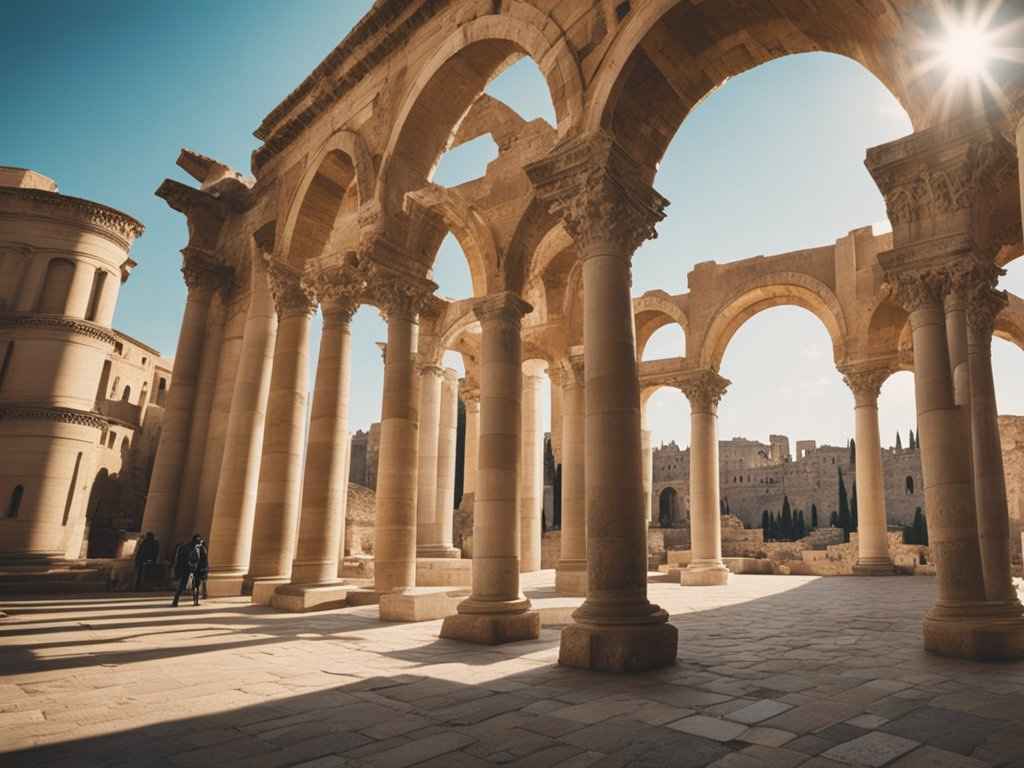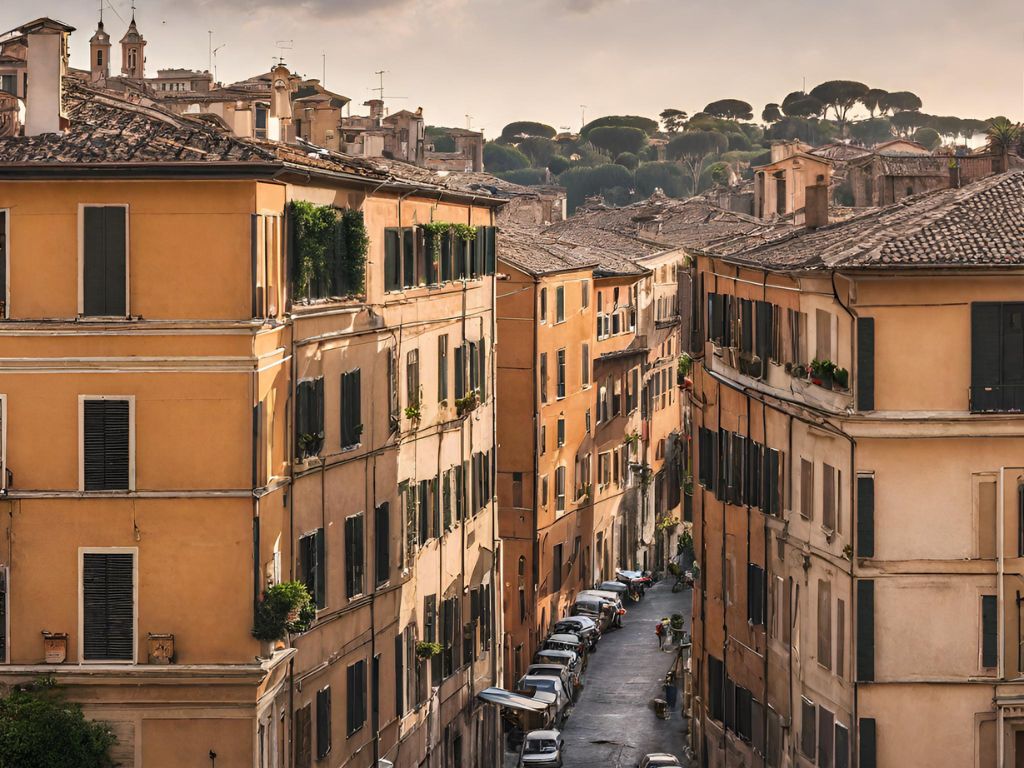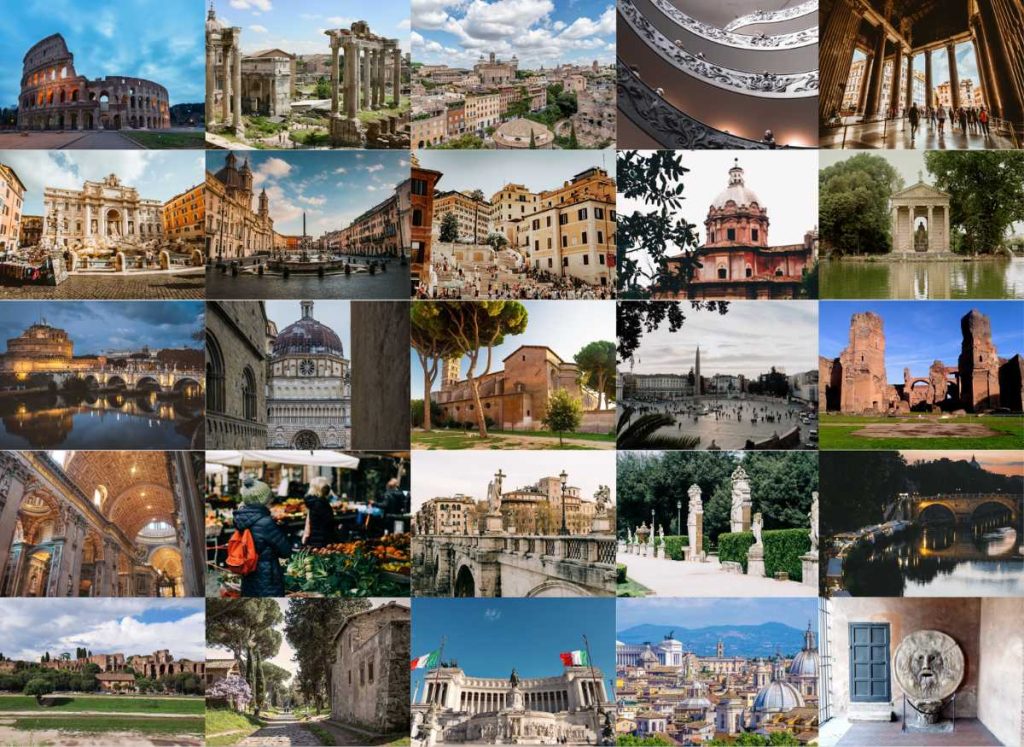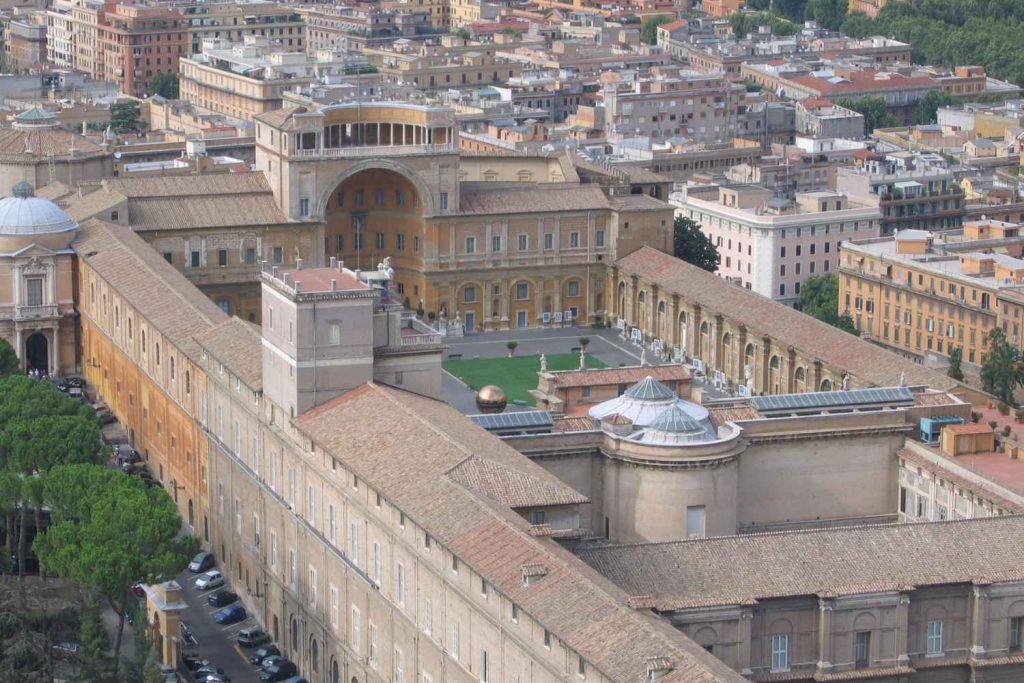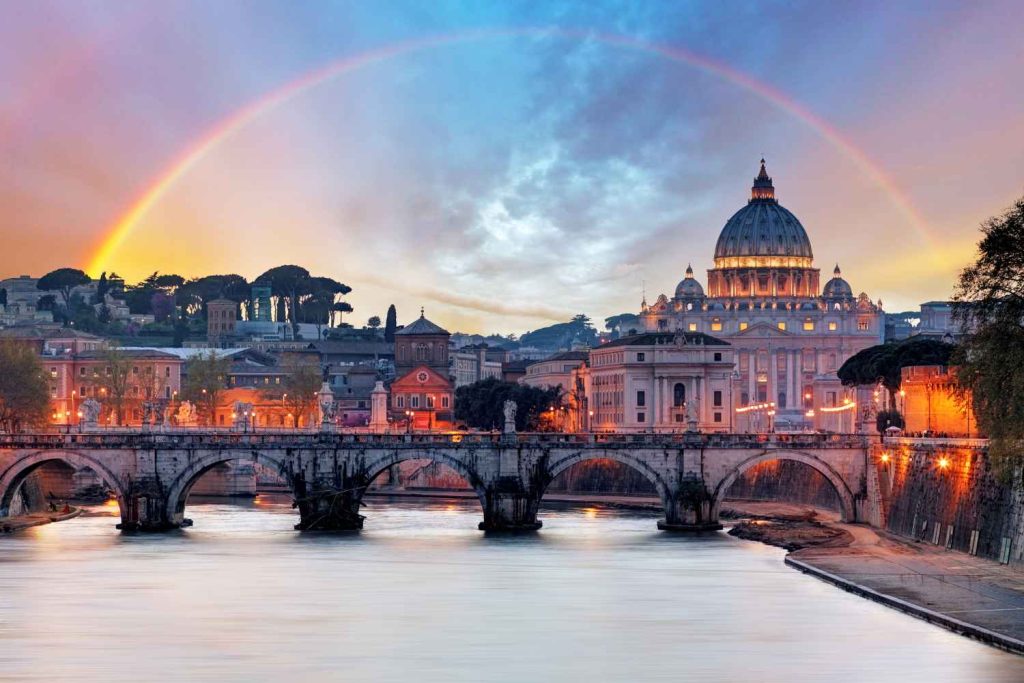Embarking on a Roman Architecture Tour is akin to stepping back in time, immersing oneself in the grandeur of an ancient civilization that laid the foundations for Western architecture and engineering.
Rome, often referred to as the “Eternal City,” is a treasure trove of architectural wonders that span centuries. As one sets foot on the cobblestone streets, the air becomes infused with a palpable sense of history, and each structure stands as a testament to the ingenuity of Roman architects.
From the iconic Colosseum to the awe-inspiring Pantheon, this journey unfolds the captivating narrative of Roman architecture, revealing its influence on modern design and engineering.
One of the most notable aspects of Roman architecture is the widespread use of the arch, which allowed them to create larger open interior spaces and produce massive structures like the Colosseum. Additionally, the Romans were the first architects in history to fully tap into the potential of domes for creating large interior spaces. The exquisite craftsmanship and ingenuity of Roman architects can be best observed in iconic buildings like the Pantheon, which boasts impressive structural designs and proportions.
Incorporating innovations from prior civilisations like the Greeks and Etruscans, the Romans adapted their architectural style to suit their specific needs and tastes. They developed a rich vocabulary of architectural forms, including the use of Ionic and Corinthian orders, which gave their structures a sense of elegance and harmony. Today, ancient Roman architecture serves as a testament to the artistic and engineering capabilities of this once-mighty empire.
Historical Development of Roman Architecture
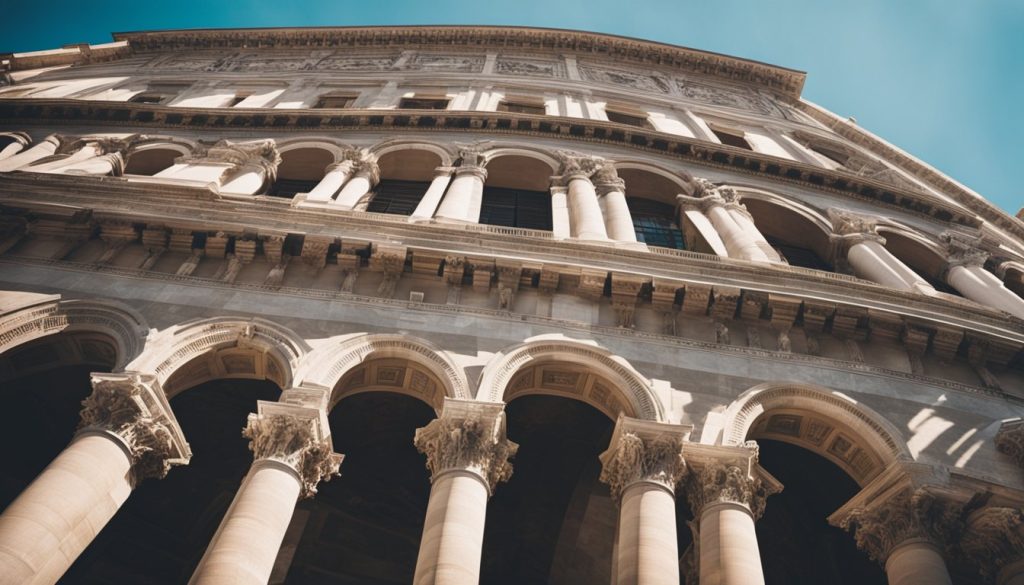
Influence of the Etruscans and Greeks
The history of Ancient Roman architecture is marked by the influence of other civilisations. One of the key influences came from the Etruscans, an advanced civilisation that inhabited Italy prior to the Roman Republic. The Romans borrowed many elements from Etruscan architecture, including the arch and the use of hydraulic cement in construction. Alongside the Etruscans, Greek architecture also played a significant role in shaping Roman building styles. The Romans were greatly inspired by the Greek architectural orders, such as Doric, Ionic, and Corinthian, and incorporated them into their own designs with some modifications. They also added their distinct touch, leading to the creation of the Composite order, which combined aspects of the Ionic and Corinthian styles.
Architectural Evolution from Republic to Empire
During the Roman Republic, architecture focused primarily on public and religious buildings, such as temples, porticoes, and basilicas. However, as the Roman Empire emerged under the rule of Augustus, a new era of grandiose monumental construction began. This period saw the construction of numerous imperial structures, such as the Pantheon and the Colosseum, showcasing Rome’s prowess in engineering, their wealth, and their influence on the western world.
The Roman Empire’s architectural advancements were driven by different emperors. Augustus, who famously claimed to have found Rome as a city of brick and left it a city of marble, kickstarted a programme of urban beautification and monumental construction. Later, Emperor Hadrian contributed significantly to the spread of Roman architecture by constructing elaborate buildings—including his signature architectural piece, Hadrian’s Wall—across the empire.
An essential factor in the evolution of Roman architecture was the discovery of concrete, which enabled them to develop innovative construction methods, such as the use of vaults and domes. These techniques provided more efficiency and stability to their structures, a defining characteristic of Roman architecture that is still admired today.
The Colosseum
Undoubtedly the crown jewel of Roman architecture, the Colosseum stands as an enduring symbol of ancient engineering prowess. As you stand before the colossal amphitheatre, it’s impossible not to be overwhelmed by the magnitude of its construction. Built in AD 80, the Colosseum was a marvel of its time, accommodating up to 80,000 spectators who gathered to witness gladiatorial contests and public spectacles. The precision of its arches and the innovative use of concrete are architectural feats that continue to captivate engineers and historians alike. A guided tour takes you through the labyrinthine corridors, offering insights into the Colosseum’s rich history, the techniques employed in its construction, and the cultural significance of the events that unfolded within its walls.
Unleash the grandeur of history at the Colosseum! Book your immersive Colosseum tour now to step into the arena where gladiators once battled.
Colosseum And Ancient Rome Family Tour For Kids
Rome: Colosseum, Roman Forum And Palatine Hill Guided Tour
Colosseum VIP Access with Arena and Ancient Rome Tour (Viator)
The Pantheon
As the Roman Architecture Tour unfolds, the Pantheon emerges as another masterpiece that defies the limitations of time. Originally built as a temple to the gods, the Pantheon’s dome remains an unparalleled achievement in architectural engineering. The perfectly proportioned structure, with its oculus at the apex, allows sunlight to filter through, creating a celestial play of light within the vast interior. Dedicated to understanding the divine, the Pantheon’s design showcases the Romans’ mastery of geometry and materials, setting it apart as a marvel that continues to inspire architects across the globe. A guided exploration of the Pantheon provides a glimpse into the mathematical precision that underlies its construction, offering a profound appreciation for the fusion of art and science that defines Roman architecture.
Explore the architectural marvel of the Pantheon! Secure your spot on our Pantheon tour for an enlightening journey through this ancient temple.
Rome: Pantheon Express Guided Tour
Rome: Food, Wine & Sightseeing around Pantheon and Campo dè Fiori Market
Pantheon Elite Tour in Rome (Viator)
The Roman Forum
The Roman Forum, once the bustling heart of ancient Rome, serves as an open-air museum where the vestiges of political, religious, and commercial life intertwine. Walking amidst the ruins, one can almost hear the echoes of political orations and feel the pulse of daily life in the Roman Republic. Surrounded by iconic structures such as the Temple of Saturn and the Arch of Septimius Severus, the Forum provides a comprehensive view of Roman civic architecture. A guided tour unveils the stories of triumphs and tribulations that unfolded in this historic space, shedding light on the architectural evolution from the Republican era to the Imperial period. The juxtaposition of columns, arches, and temples paints a vivid picture of the city’s evolution, offering a profound understanding of how architecture mirrored the societal shifts in ancient Rome.
Dive into the heart of ancient Rome at the Roman Forum! Join our expert-guided tour to discover the political and cultural centre of the Roman Empire.
Tour Of Colosseum & Roman Forum With Dutch Guide
Semi-Private Colosseum, Roman Forum & Palatine Hill Tour – Skip the Line Entrance
Skip the Line: Colosseum, Roman Forum, and Palatine Hill Tour (Viator)
The Vatican City
No Roman Architecture Tour is complete without a visit to the Vatican City, where the opulence of Renaissance architecture converges with the grandeur of Roman design. St. Peter’s Basilica, with its iconic dome designed by Michelangelo, stands as a testament to the enduring influence of Roman architectural principles. As you explore the Vatican Museums, adorned with frescoes and sculptures from various periods, the intricate details of classical architecture become intertwined with the artistic brilliance of the Renaissance. The journey through the Vatican encapsulates the evolving narrative of Roman architecture, demonstrating how it laid the groundwork for the architectural marvels of subsequent centuries. The fusion of religious symbolism, artistic expression, and structural innovation offers a captivating conclusion to the exploration of Rome’s architectural legacy.
Embark on a spiritual and artistic journey at the Vatican City! Reserve your Vatican tour to witness the beauty of St. Peter’s Basilica and the awe-inspiring Sistine Chapel.
Vatican City: Leonardo Da Vinci Exhibition Ticket
Rediscover the Beauty and History of Vatican City on a Guided Tour – Skip the line
Vatican Museums, Sistine Chapel and St. Peter’s Basilica Guided Tour (Viator)
The Palatine Hill
Perched above the Roman Forum, the Palatine Hill offers a panoramic view of Rome and a deeper understanding of the city’s architectural evolution. Steeped in myth and history, the Palatine Hill is considered the birthplace of Rome and was later transformed into a luxurious residential area for the Roman elite. The remains of grand palaces, such as the Domus Augustana, showcase the opulence of Imperial Roman architecture. A guided stroll through the Palatine Hill unveils the layers of Roman history, from the humble huts of Romulus to the sumptuous abodes of emperors, providing a comprehensive overview of the architectural styles that defined different eras.
Ascend to the birthplace of Rome’s emperors on the Palatine Hill! Don’t miss out on our Palatine Hill tour to explore the ruins and panoramic views of the city.
Rome: Skip The Line Colosseum, Forum, And Palatine Hill Tour
Rome: Colosseum, Roman Forum And Palatine Hill Guided Tour
Skip the Line: Colosseum, Roman Forum, and Palatine Hill Tour (Viator)
The Baths of Caracalla
The Baths of Caracalla stand as a testament to the Romans’ dedication to leisure and communal activities. Constructed in the 3rd century AD, these vast public baths could accommodate over 1,600 bathers simultaneously. The scale and architectural innovation exhibited in the Baths of Caracalla are awe-inspiring, with towering vaults and intricately designed rooms. As you explore the well-preserved ruins, the sheer magnitude of the complex becomes evident, offering a glimpse into the social and cultural aspects of Roman life. The well-preserved mosaics and sculptures further enhance the immersive experience, allowing visitors to envision the grandeur of public life in ancient Rome.
Immerse yourself in the opulence of Roman baths at Caracalla! Book your tour to experience the ancient luxury of the Baths of Caracalla.
The Baths of Caracalla Private Tour with PhD guide Donato
Baths of Caracalla – Private Tour
Small-Group Tour of Caracalla Baths and Circus Maximus (Viator)
Ancient Aqueducts
Venturing beyond the city center, a Roman Architecture Tour explores the outskirts to witness the engineering marvels that sustained the ancient metropolis – the aqueducts. The Roman aqueducts, such as the Aqua Claudia and the Aqua Virgo, showcased the Romans’ mastery of hydraulic engineering. These impressive structures transported water from distant sources to quench the thirst of a burgeoning city. Tracing the paths of these ancient aqueducts reveals not only the technological ingenuity of Roman engineers but also the strategic urban planning that ensured a reliable water supply. The arches and channels of the aqueducts stand as silent witnesses to the Roman commitment to both functionality and aesthetics, as they seamlessly integrated these colossal structures into the surrounding landscape.
Follow the path of ancient waterways on our Ancient Aqueducts tour! Reserve your spot to marvel at the engineering brilliance that sustained ancient Rome.
Crypts, Ancient Aqueducts and Skeletons Tour
The Park of the Aqueducts Private Walking Tour
The Ancient Aqueducts of Rome (Viator)
Ostia Antica
For a more immersive experience into daily Roman life, a detour to Ostia Antica, the ancient harbor city of Rome, is a must. As an essential hub for trade and commerce, Ostia Antica’s well-preserved ruins offer a glimpse into the commercial architecture of ancient Rome. From the grand Theater to the intricate mosaics of the House of the Ship Europa, each corner tells a story of a thriving port city. The layout of the streets, marketplaces, and residential areas provides valuable insights into how urban planning and architectural design were intricately linked to the functioning of a bustling Roman city. Exploring Ostia Antica completes the Roman Architecture Tour by presenting a holistic view of the built environment that sustained the Roman Empire.
Step back in time at Ostia Antica, the ancient harbour city! Join our tour to wander through well-preserved ruins and uncover the secrets of this archaeological gem.
Ostia Antica – Half Day Private Tour from Rome
Private Guided Tour of Ostia Antica Archaeological Site with Alessandra
Ostia Antica Tour from Rome – Semi Private (Viator)
Modern Influences and Preservation Efforts
The Roman Architecture Tour doesn’t merely delve into the past; it also highlights the enduring impact of Roman design on contemporary architecture. From neoclassical buildings inspired by Roman forms to modern engineering principles rooted in ancient techniques, the influence of Rome’s architectural legacy resonates across the globe. Preservation efforts, such as those undertaken by organizations like Italia Nostra, play a crucial role in maintaining and safeguarding these cultural treasures for future generations. The tour concludes with a reflection on the responsibility to protect and celebrate the architectural wonders that serve as a bridge between the ancient and the modern, ensuring that the legacy of Roman architecture continues to inspire and educate.
Preserving the Echoes: A Commitment to Legacy and Continuity in the Wake of the Roman Architecture Tour
In conclusion, a Roman Architecture Tour is not merely a journey through the remnants of a bygone era but a dynamic exploration of the foundations upon which our modern architectural marvels stand. From the monumental Colosseum to the intricate details of the Palatine Hill, the tour unravels the layers of history, culture, and innovation that define Rome’s architectural legacy. The ability of the ancient Romans to seamlessly blend functionality with artistic expression is a testament to their engineering prowess and creative vision, a legacy that continues to shape the skylines of cities around the world.
As the sun sets over the majestic cityscape of Rome, the echoes of ancient footsteps resonate through the cobblestone streets. The Roman Architecture Tour not only imparts a profound understanding of the structures themselves but also fosters a connection with the people who built, lived, and thrived within these architectural wonders. The enduring allure of Rome’s architectural treasures lies not only in their physical grandeur but in the stories they tell – tales of triumph, innovation, and the relentless pursuit of excellence.
Moreover, the tour serves as a reminder of the collective responsibility to preserve and cherish these cultural heritage sites. As custodians of the past, we are entrusted with the duty to ensure that future generations can continue to marvel at the ingenuity of Roman architects and learn from the lessons embedded in these ancient structures. The conservation efforts underway are crucial in maintaining the integrity of these architectural gems, allowing them to serve as educational tools that bridge the gap between antiquity and the present.
In the twilight of the Roman Architecture Tour, one is left with a profound appreciation for the timeless beauty and enduring significance of Rome’s architectural treasures. The journey through ancient arches, columns, and domes becomes a metaphorical bridge that connects us with our cultural roots, inspiring a deeper appreciation for the intersections of art, science, and human ingenuity. In the heart of Rome, where past and present converge, the legacy of Roman architecture lives on, inviting us to continue the exploration of our shared architectural heritage and to draw inspiration from the magnificence of an empire that shaped the course of history.
More articles you might like...
You can find more great Rome content in the following categories;
All about Vatican City Commonly Asked Rome Questions Rome Accommodation Rome Food and Drink Rome History and Culture Rome Neighbourhoods Rome Tours and Must-See Attractions
